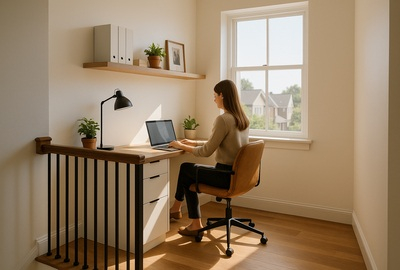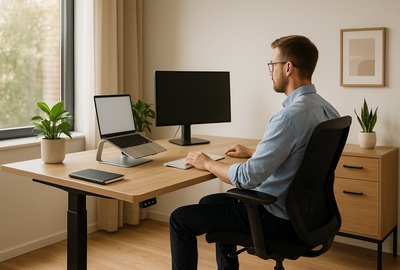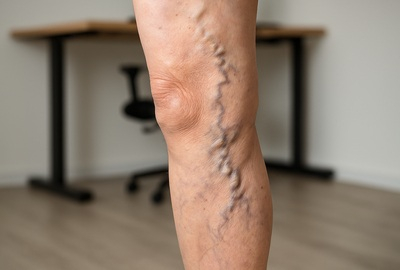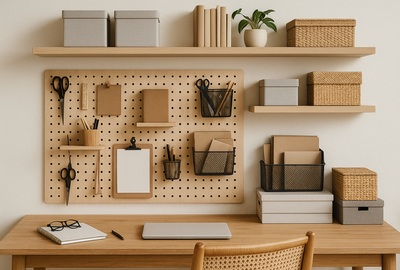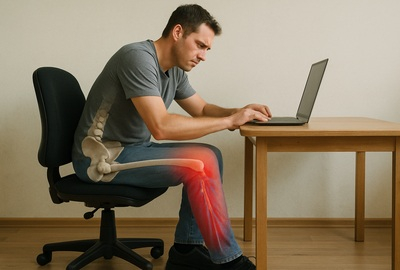- Does Prolonged Sitting Cause Varicose Veins? Find Out!
- Does Prolonged Sitting Cause Varicose Veins? The Circulation Breakdown
- Recognising the Signs: Leg Pain, Poor Circulation, and Varicose Veins
- Risk Factors That Worsen Varicose Veins and Deep Vein Thrombosis (DVT)
- Chronic Venous Insufficiency: How Prolonged Standing and Sitting Affect You
- How to Prevent Varicose Veins: Movement Strategies for Healthy Legs
- Best Exercises to Improve Circulation and Avoid Deep Vein Thrombosis
- Sitting vs Standing Desks: Which One Supports Better Blood Flow?
- Start with Compression Socks and Know When to See a Healthcare Provider
- Conclusion: Keep Moving, Stay Aware
Does Prolonged Sitting Cause Varicose Veins? Find Out!
Sitting for work, binge-watching a new show, or just stuck in traffic—many of us spend hours on end without standing up. But have you ever wondered: does prolonged sitting cause varicose veins? While not the sole cause, it’s a major contributor. When blood flow slows in your legs due to inactivity, pressure builds up in the veins. Over time, this can lead to visible vein issues, and in worse cases, serious conditions like deep vein thrombosis (DVT).
Let’s break it down in real-world terms—what happens to your veins when you sit or stand for prolonged periods, and more importantly, how can you prevent varicose veins without flipping your entire lifestyle upside down?
1. Does Prolonged Sitting Cause Varicose Veins? The Circulation Breakdown
Yes, prolonged sitting can trigger varicose vein problems. When your legs remain still for extended periods, the blood flow slows, especially in the deep veins of your legs. This can lead to blood pooling and increased pressure within the vein walls.
Veins pump blood back to the heart using one-way valves. But sitting limits muscle movement, and without that motion, the way the body pumps blood becomes less effective. Poor circulation becomes the silent threat, allowing pressure to quietly build up until varicose veins occur.
The way veins play a role in keeping your entire body regulated is underrated—they're not just passive pipes. They rely on movement and gravity to maintain healthy circulation, especially when you're on your feet or moving throughout the day. When circulation slows, it can also lead to changes in blood pressure, further compounding vein strain.
2. Recognising the Signs: Leg Pain, Poor Circulation, and Varicose Veins
If you’ve ever felt leg pain after a long drive or noticed visible veins that seem to bulge like cords, you might already have signs of varicose veins. These rope like veins are often accompanied by:
- Skin discoloration around the ankles
- Heaviness or aching in your legs
- Swelling from poor blood flow
- Burning or itching sensations along blood vessels
Getting varicose veins diagnosed early is key. A doctor may perform an ultrasound to check for blood flow irregularities and determine if you're dealing with more serious vein conditions beneath the surface.
If left unchecked, this can even develop into severe varicose veins. And while spider veins are often a cosmetic concern, they can signal that your vein health is at risk.
3. Risk Factors That Worsen Varicose Veins and Deep Vein Thrombosis (DVT)
Let’s talk risk factors. Genetics, age, and lifestyle all play a part—but things like excessive weight, pregnancy, and a sedentary lifestyle are major culprits. Sitting or standing for long periods both make things worse. It’s like putting your leg veins in a chokehold.
And it's not just about looks. Deep vein thrombosis DVT is a serious condition where blood clots form in the deep veins, especially after sitting for long periods. These are not just discomforts—they can become even blood clots that travel through the bloodstream. If a clot reaches your lungs, it could result in a pulmonary embolism, which can be life-threatening.
Know your medical history. If you're at risk, take every symptom seriously—even mild swelling or discomfort in your lower legs.
4. Chronic Venous Insufficiency: How Prolonged Standing and Sitting Affect You
You may think you’re helping by switching to standing more often—but prolonged standing isn’t harmless either. Both sitting and standing in one position for extended periods can weaken vein walls, causing reduced blood flow and chronic venous insufficiency (CVI).
CVI occurs when your veins can’t send blood back to the heart effectively. You’ll notice tired, achy legs, especially after a day on your feet or at a desk job. This constant increased pressure stretches out the veins, making it harder for valves to work—and yes, that’s how varicose veins develop.
For those who work standing all day, it’s crucial to keep your feet flat and shift your weight frequently to avoid stagnant pressure.
5. How to Prevent Varicose Veins: Movement Strategies for Healthy Legs
Prevention starts with lifestyle. Want healthy legs? Here’s how to prevent varicose veins from forming:
- Break up long periods of sitting with brief walks or physical activity
- Raise your feet above heart level for a few minutes daily to ease pooling blood
- Avoid excess weight by staying active and maintaining a healthy weight
- Use compression socks or compression stockings to reduce swelling and support veins
- Choose foods that support overall health and vein health
You can also try elastic stockings for light support if you’re not quite ready for full compression gear. They're simple, effective, and great for early-stage symptoms.
6. Best Exercises to Improve Circulation and Avoid Deep Vein Thrombosis
Don’t underestimate the power of movement. Activities that target leg muscles, especially the calf muscles, make a real difference in how your blood circulates. Try these:
- Walking briskly for 15–30 minutes
- Cycling or swimming for low-impact strength
- Doing simple calf raises at your desk
- Standing desk stretches or short squats throughout the day
These moves help your calf muscles contract, which supports consistent blood flow and helps avoid deep vein thrombosis. They’re easy, quick, and free—just be consistent.
7. Sitting vs Standing Desks: Which One Supports Better Blood Flow?
Standing desks are trendy, but they’re not a silver bullet. The best option is to alternate between sitting and standing. Why? Too much of either creates poor circulation and puts your veins under stress.
If you work a desk job, use a standing desk part-time and pair it with movement breaks. It’s not about choosing one position—it’s about balance. You want to increase blood flow while avoiding increased pressure on your lower legs.
Remember: a dynamic workspace promotes healthy circulation far better than a static one.
8. Start with Compression Socks and Know When to See a Healthcare Provider
If you're feeling the symptoms of existing varicose veins, don’t panic. Slip on a pair of compression socks—they help improve circulation and reduce swelling right away. These elastic wonders make it easier for your veins to send blood upward.
But if things don’t improve, it’s time to see a healthcare provider. You may need more than conservative measures to treat varicose veins. Specialists can determine whether your condition is minor or if you're facing severe varicose veins. They may even recommend procedures to remove varicose veins through non surgical treatment options.
Conclusion: Keep Moving, Stay Aware
So, does prolonged sitting cause varicose veins? Yes—and so does prolonged standing. It’s the stillness that does the damage. Whether it’s caused by work, travel, or daily habits, not moving for long periods puts your veins at risk.
Keep your blood moving, stay on top of risk factors, and lean into healthy lifestyle habits that support your overall health. Prevention doesn’t require extreme changes—just small, smart steps toward better circulation and vein health.
And if your daily routine has you tied to a desk, consider making your workspace work for your legs. At Deskup, we offer standing desks, sit-stand frames, and ergonomic accessories designed to keep your body moving and your veins healthy—without interrupting your workflow. Every product is stocked in Australia and ready for same-day dispatch.
Your legs carry you everywhere. Let’s return the favor—and give them the workspace they deserve.


 Buy Now, Pay Later
Buy Now, Pay Later Verified Rating
Verified Rating 
